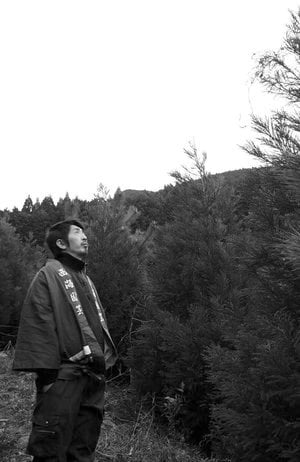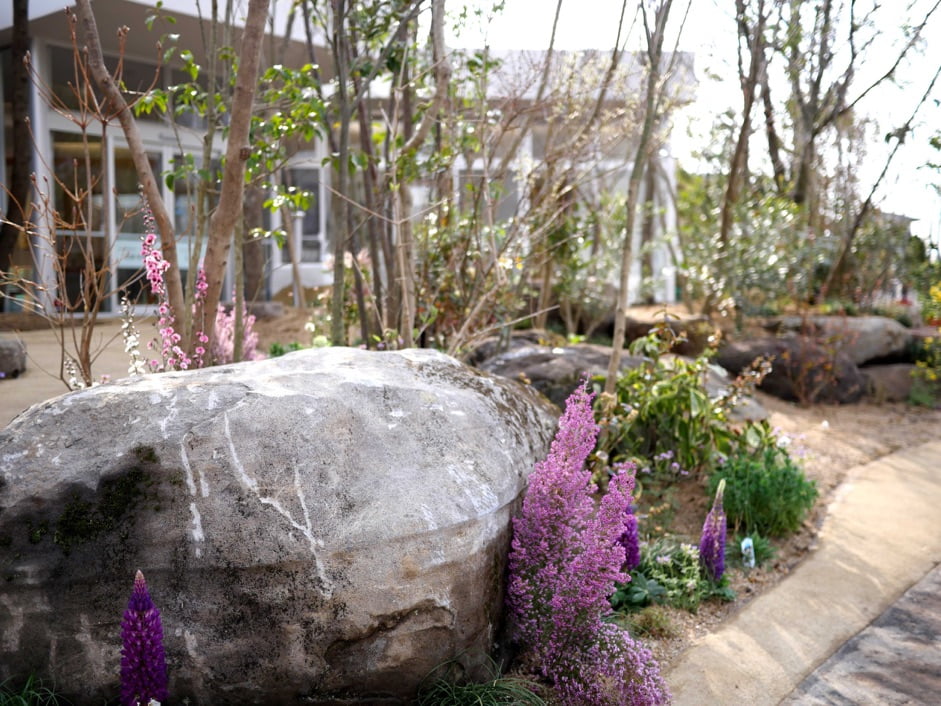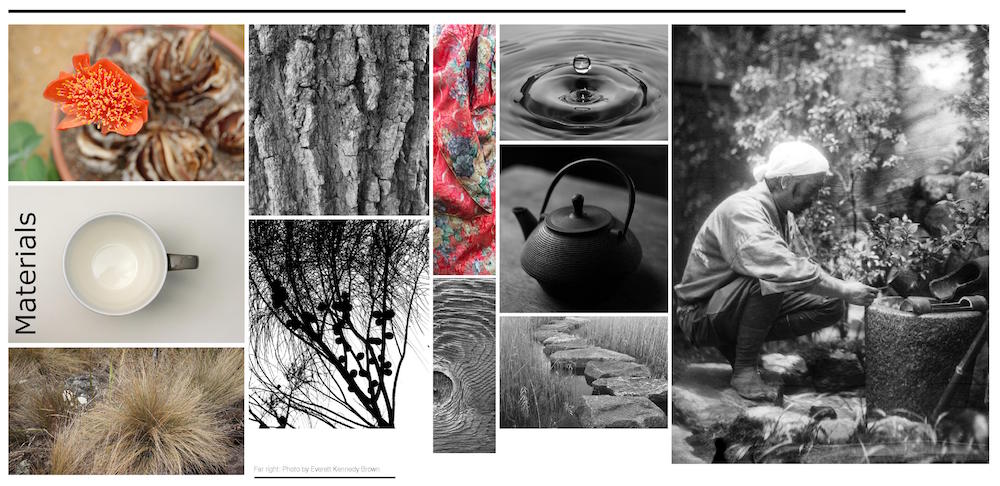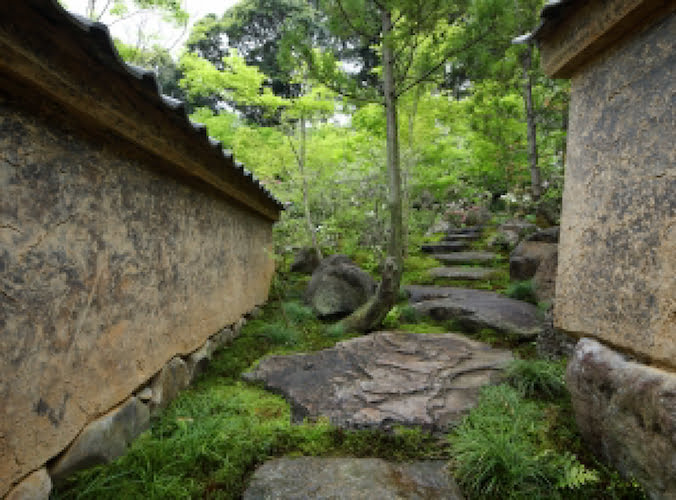In an increasingly fractured world and where global and political conflict prevail, projects that explore new cultural understandings and celebrate the beauty of nature and the power of friendship can offer us a sense of hope, beyond polarisation and despair.
Various research studies in design and ecology have shown us that human connection with nature remains a fundamental part of our makeup and that design with nature has the possibility to enhance the quality of life in urban environments:
“…the inherent human inclination to affiliate with nature … continues to be critical to people’s physical and mental health and wellbeing”
(Wilson 1986, Kellert and Wilson 1993, Kellert 1997, 2012).
Garden and urban designers have a role to play in enhancing our environments and bringing us into closer connection with nature both visually and physically, and thereby are important agents in our health and wellbeing. Garden shows, from Chelsea Flower Show to our own Melbourne International Flower and Garden show, illustrate the enthusiastic popularisation of gardens as leisure and as significant contributors to our wellbeing. These shows also represent potentially lucrative commercial opportunities for sponsors and winning designer participants. But can these shows communicate a deeper purpose and process that helps to bridge bigger issues of ecology, community wellbeing and diversity?
#gallery-1 {margin: auto;}#gallery-1 .gallery-item {float: left;margin-top: 10px;text-align: center;width: 33%;}#gallery-1 img {border: 2px solid #cfcfcf;}#gallery-1 .gallery-caption {margin-left: 0;}/* see gallery_shortcode() in wp-includes/media.php */ Yousuke Yamaguchi
Yousuke Yamaguchi Ross Uebergang
Ross Uebergang
One garden at the upcoming 2018 MIFGS stands out in terms of its ambition be about more than the realisation of an individual designer’s vision or a marketing exercise for the latest garden trends. The Unity Garden will be an experimental garden that bridges ideas from both eastern and western garden forms. The concept is built on the foundations of a friendship between a young, up-and-coming designer from Australia’s Wimmera region and an award-winning Japanese designer coming to Australia for the first time. This garden is fundamentally built on the goodwill of volunteers and an unusual friendship where there is little common spoken language, but where there is a shared respect for the power and beauty of nature and its capacity to facilitate cross cultural design.
Yousuke Yamaguchi of Japan and local designer Ross Uebergang first worked together in Japan and, through their work, developed a friendship that has allowed them to learn about the other’s culture and design traditions. Yousuke wants to ‘create gardens that are not only aesthetically appealing but bring a sense of satisfaction and comfort to the creator and owner’. His designs are influenced by his studies and training in Kyoto, the home of Japan’s most revered gardens. He was later appointed gardener in charge of the Japanese Gardens at the Royal Botanical Gardens, Kew in London.
His design philosophy emphasises the connectedness of plant and human ecosystems, he says:
“plants and trees have life, as well as human beings. When you treat them with deep appreciation, they will teach you. We are alive thanks to the existence of the earth, plants and trees.”

Design Yousuke Yamaguchi. Photo Ross Uebergang
Ross’s drive to learn and push himself took him to Japan where he competed in the 2015 World Flower Garden Show in Nagasaki Prefecture, taking second place. His time in Japan enabled him to learn and experiment with hands-on techniques under the tutelage of Yousuke, and to observe the nature centred philosophy of Japanese garden construction and design compared with a more pragmatic Australian approach. Working with Yousuke, Ross has learned greater patience – instead looking to nature and letting the process and materials lead the design. When he returned to Australia, Ross began to implement this same approach in his naturalistic bush gardens.
The Unity Garden concept is based in the tradition of the Japanese Tea Ceremony; a meditative practice steeped in ritual that emphasises simplicity and naturalness. The materials used in the ceremony as well as the environment in which it takes place are highly symbolic: old and new materials representing the cycle of life, the aroma of the tea enlivening the senses, the feel and warmth of a ceramic cup and the look of its glaze, built structures that are inside or outside representing inner and outer worlds and self.
Their concept will also challenge the idea of a single master designer and instead work collaboratively with a team to reach a resolved design. Ross says that, ‘in general when you are creating a single garden you are trying to create a cohesive whole piece. There is generally one author with support from others perhaps.This garden will be representing two people, two cultures and two ecosystems’.

Plants and materials will be given precedence and natural forms will provide a symbolic palette that allows the designers to play with ideas of inside and outside, conceal and reveal, thresholds, viewpoints and exits:
“The site is divided into three areas. The inside has a Japanese stone and water feature aesthetic with a tea ceremony function. The outside, an Australian bush aesthetic with an outdoor living function. The third area is the threshold where the two cultures meet and embrace diversity”
(Uebergang & Yamaguchi 2017).
The designers are interested in celebrating the intersection of the cultures through common construction techniques, for example when they were exploring wall coatings for the Unity Garden, they decided to use a clay based render similar to an Australian wattle and daub technique that is also used in traditional Japanese construction. Ross says:
“the technique uses woven timber – Wattle in Australia and Cedar in Japan – as a frame. This is rendered using a mix of soil and things found in the local area.”
They had worked on a similar construction technique for a tea house at the Takenaka Carpentry Tools Museum in Japan:
“we realised this solution was perfect for the aesthetic we want to achieve in the Unity Garden“.

Design Yousuke Yamaguchi. Photo Norihisa Ishii
Yousuke hopes to learn more about Australian plants and climate during this project and Ross will introduce him to the bush style of planting used so innovatively by firms like Taylor Cullity and Lethlean. He will be largely relying on Ross’s Australian plant knowledge and local trade and supplier contacts to put the show garden together.
For Ross the creative process will be equally important to the finished result:
“A lot of the time at the garden show people are trying to create something that is directly saleable to make all of the effort worthwhile. Yousuke may not get any direct business from this garden but for him it’s an adventure, a chance to do something different and expand his name on the world stage. I am a small business working on projects from design to construction and I don’t need a lot of jobs to keep me going. Ideally I want clients who have projects that don’t quite fit the normal garden design and construction mould. I am happy to take risks with them and make something unique for each client.”
The Unity Garden is as ambitious as any of the yearly entries for the MIFGS and the resolution of its design ideas is yet to be proven. It aims to be a place of beauty and meditative contemplation and to speak of more than just commercial and individual promotion. It wants to contribute to a wider dialogue about diversity, design and creative practice, however bringing the ideas, materials and plants into a coherent and successful design for both the public and the judges will be the real challenge ahead.
Find out more about the Unity Garden at the Melbourne International Flower & Garden Show or sign up to help with construction, organisation or sponsorship through the ROSSU website.
